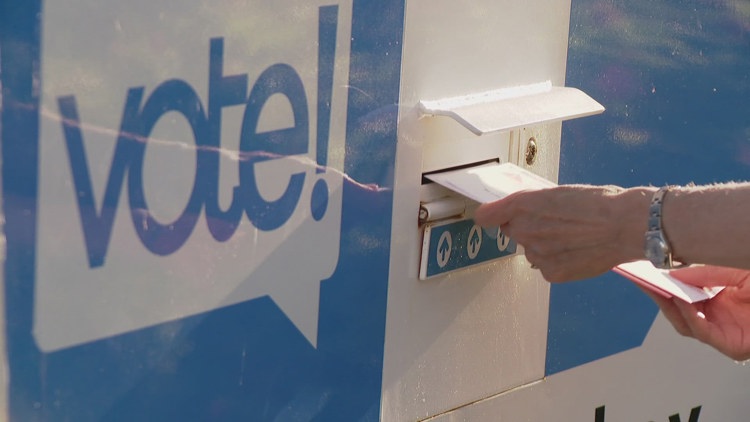WASHINGTON, USA — The 2024 general election is Nov. 5.
Ballots for Washington voters were mailed by Oct. 18. Voters have until Nov. 5 at 8 p.m. to drop off or mail in their ballot.
Many key races are on the general election ballot, among them are the race for Washington governor. Voters will decide if Sen. Maria Cantwell will continue to serve in the U.S. Senate and who will represent them in all 10 Congressional Districts.
Here's how to track your ballot, as well as a recap of how your ballot is counted:
How to track your ballot
Everyone can track down their ballot during an election. To do so, you will need to visit VoteWA.gov. Your ballot should be updated as it is received. It usually takes three to five business days for your ballot to be posted after it is received.
Your ballot goes through three steps, according to the Washington Secretary of State's Office:
- SENT: The county marked your ballot as sent (the day you see might be in the future; that is not unusual).
- RECEIVED: Your ballot has been received and it is just pending a signature review.
- ACCEPTED: Your vote is counted; your signature has been reviewed and you were marked as a voter for this election.
Keep in mind that there is a possibility that a ballot is not accepted and instead gets rejected or challenged. If your signature or ballot is challenged the county election official will contact you.
There are a couple of codes while your ballot is challenged.
HOLD: This happens when a voter sends an old ballot. When this happens, your ballot will be counted if the ballot style is the same as the current ballot. If it is not, your ballot will be held for seven days after the election, after which it will be duplicated into an eligible ballot unless the current ballot is returned.
REVIEW: Your ballot’s signature is currently being reviewed.
There are different reasons why your ballot might get challenged. In all of these cases, the county election official will contact you.
UNSIGNED: This happens if there is no signature on the return envelope.
SIGNATURES DO NOT MATCH: This happens when the signature on the envelope does not match your signature on file.
ID REQUIRED: This happens when the voter registration fails the ID check. An ID is needed for the ballot to count.
OTHER THAN VOTER: This happens when the signature on the envelope does not match your signature on file and it appears to be someone else's name.
POWER OF ATTORNEY: This happens when the signature on the envelope was completed by someone other than the voter and said person is identified as a Power of Attorney. The voter must mark an “X” and have two witnesses.
Be careful with your signature. Make sure it’s the same one you used on your driver's license or ID.
How your ballot is counted
- SORTING: Ballots are sorted by a machine; they are organized by numbered batches, and that same machine takes a picture of each signature in the ballots.
- SIGNATURE VERIFICATION: With those pictures taken, election workers will then compare each of the signatures on the envelopes to the signatures on file. Most of the time, they will compare it to signatures from driver's licenses. If the signatures do not match, they will contact you to confirm the ballot is indeed yours.
- OPENING, INSPECTING AND SCANNING: This is the busiest part of the process. Election workers will open each ballot and make sure they are filled properly. If they are not filled out properly, they will contact you. Finally, the workers will run the ballots through a scanner machine. It is the machine that records the votes.
- SECURITY: Election workers have to check their personal belongings at the counter before the start of their shift. As a uniform, they wear color-coded lanyards and they are monitored by cameras.
Alarms are set off every time someone without a county badge opens the door. For extra security, some rooms can only be opened by specific staff members, who can only unlock the door with their fingerprints. There are also additional measures against hacking. - OBSERVATION: Political party representatives walk around the room, observing the activity. They are trained election observers who are familiar with the process.
If you want to see how ballots are counted you can take a tour or you can watch the process live on webcams.



